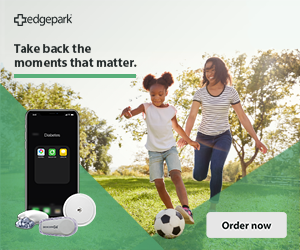7 items to keep in your T1D at-home emergency kit
During times like these, as concerns about the unknown run rampant, having an at-home emergency kit can help you address (and avoid) common worries. Fear is a powerful motivator, but being prepared with a fully stocked kit can help you feel more in control and capable of managing your type 1 diabetes (T1D) through the COVID-19 pandemic.
There's no need to panic when thinking through your emergency diabetes kit — you may already have a good idea of what should be included! A few supplies, safely stashed away, can bring you the solace you need during stressful times. The point is to plan ahead for the tougher moments so that they become easier to handle.
As someone with T1D, you know that your at-home emergency kit should contain more than just bandages. Here are seven items that should be stocked in your kit in case of a crisis.
1. Insulin
First and foremost, it's wise to always have insulin on hand. This is especially true during times like these, when getting to the pharmacy may be a little challenging. Fill your insulin prescription as soon as it is available for a refill, and talk with your doctor about a plan for having insulin on hand in case of an emergency.
Also, make sure your insulin storage methods are appropriate. Insulin must be kept at the correct, cool temperature (between 36-46 degrees Fahrenheit) when not in use. When in use, insulin cartridges and pens should be kept at room temperature (between 56-80 degrees Fahrenheit) to reduce the risk of air bubbles forming. It helps to keep your insulin in a dedicated spot in the refrigerator, so other people know not to touch it.
2. Syringes
While diabetes technology has come a long way in the last few decades, it's still crucial to have a back-up plan in place! It's a good idea to keep a few syringes in your emergency kit in the event that your insulin pump or pen hits a snag. If your go-to devices aren't working properly, you can go old-school and deliver your insulin through injection therapy.
3. Any other necessary medications
People with type 1 diabetes often have to take other maintenance medications. If this is true for you, make sure you are staying up to date on the reordering of any blood pressure medications, eye drops, thyroid medications and anything else you need to manage other health conditions.
It's a good idea to confirm that you have an active prescription on file at your pharmacy in case of an emergency. Checking this ahead of time can help you avoid feelings of anxiety during unprecedented times like these.
4. Ketone strips
Ketone strips are the unsung heroes of at-home emergency kits. When a person with T1D gets sick, the ketones produced by their body can be just as destructive as the illness that causes them! Accordingly, it's wise to have ketone urinalysis strips or a blood ketone meter at the ready in case you need to check. If you don't currently have any of these in your medicine cabinet, reach out to your clinician to ask about a prescription.
5. Fast-acting glucose
Low blood sugar can interrupt any situation (emergency or not) so it's wise to have sources of fast-acting glucose on hand at all times. Glucose tabs are terrific — this pre-portioned method of treating a low is super effective — but in a pinch, you can use anything with glucose.
Sugary candies, orange juice, honey and sugar packets all bring blood sugar up quickly. As an added perk, this gives you a perfectly valid excuse to stock a shelf with sweet treats.
6. Glucagon
No at-home emergency kit is complete without a glucagon kit! Whether you're opting for the standard injectable that requires mixing or you have the newer, pre-filled glucagon syringes (or nasal glucagon) at home, these rescue doses of glucagon can provide peace of mind. Make sure and check your glucagon periodically to ensure it has not expired.
The hope is to not ever need to use the glucagon kit — but it is important to have on-hand in the event of an emergency. Be sure to teach a member of your family how to use the device, in case you're ever unable to.
7. List of emergency information
Your at-home emergency kit should include a list of every medication you are taking as well as current dosing amounts and the name of the pharmacy to contact for refills. This list should also include contact information for your primary care doctor, your diabetes specialist and the nearest, preferred hospital system. Listing nearby trusted neighbors and friends is also a good idea, in case of a hyper-local need.
Once you have compiled the right items for your emergency kit, take the time to pick out a brightly colored bag (preferably waterproof, in case of spills) and designate it for your kit — and nothing else! Keep the bag somewhere safe and clearly marked in your home, so anyone who needs it can find it.
Then take a breath — you're doing everything you can to stay safe and healthy. And you're doing a great job.
Looking to order diabetes testing supplies and management devices? Visit the Edgepark website to browse available products and place an order to be delivered to your home.




